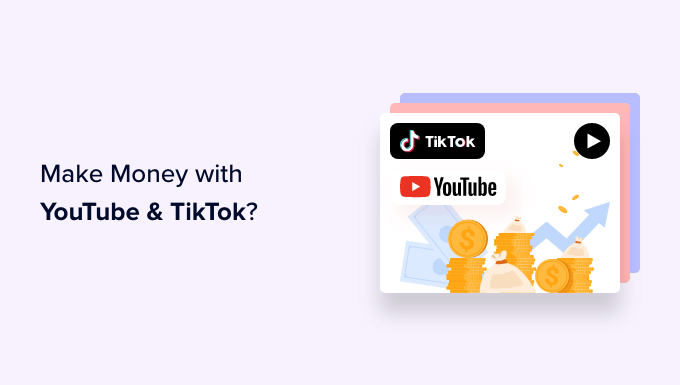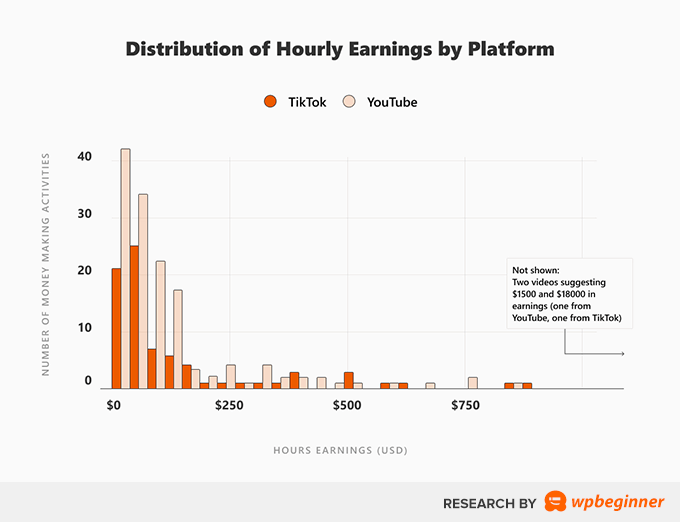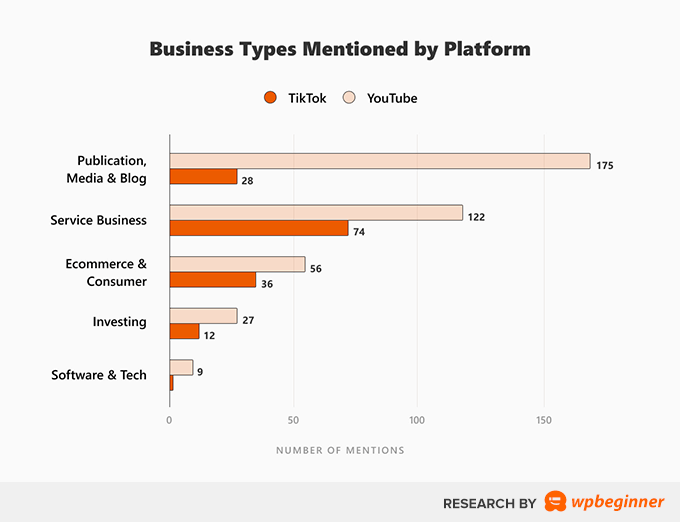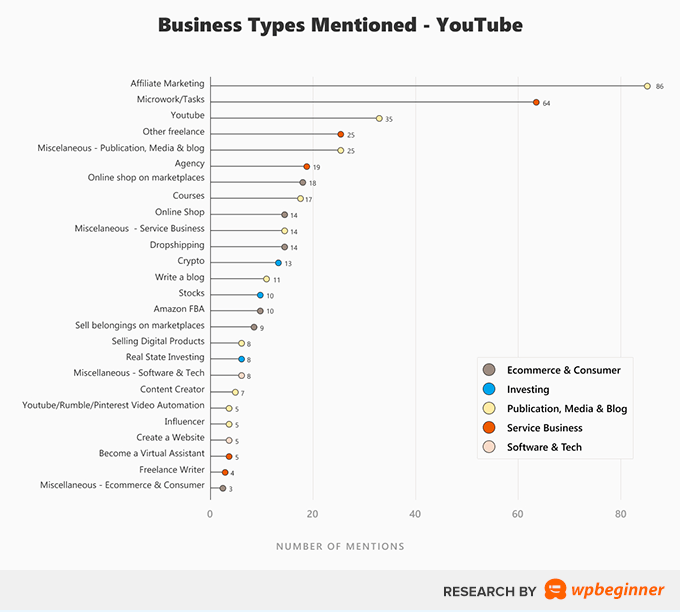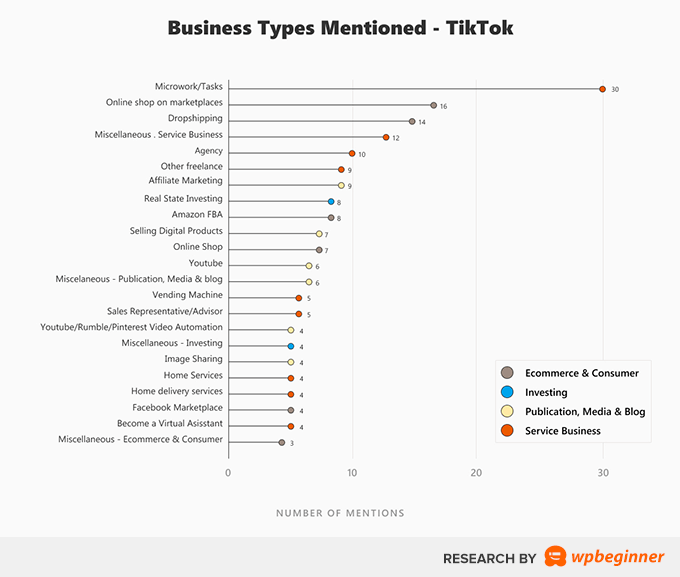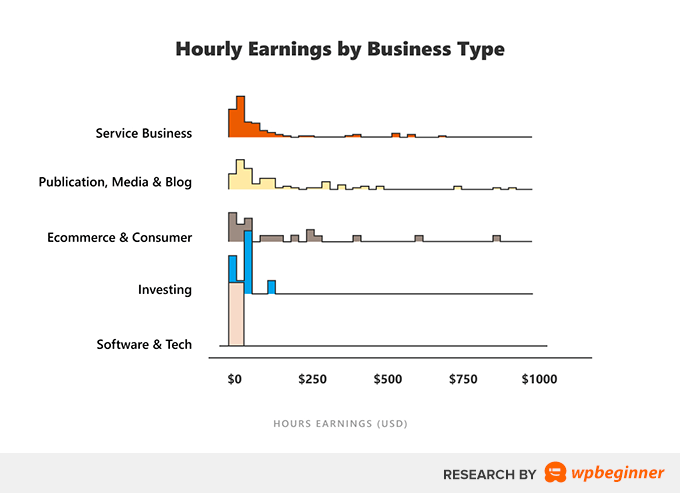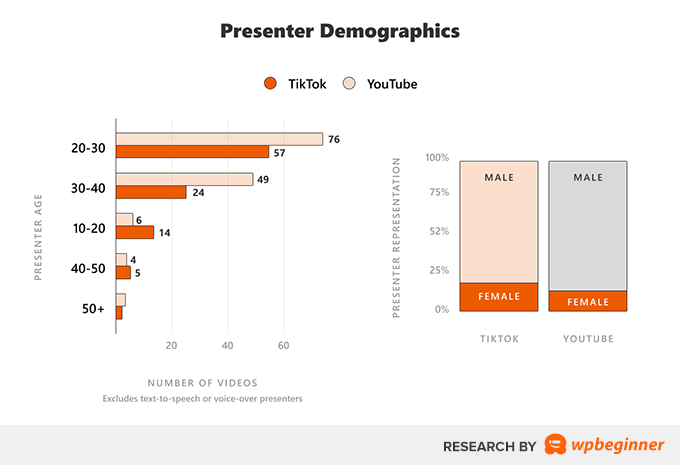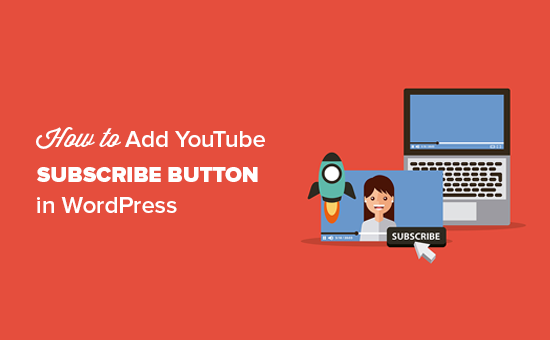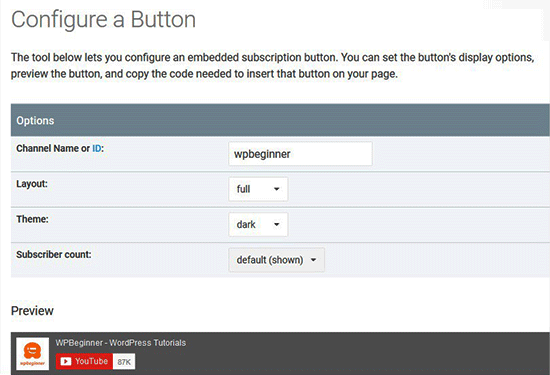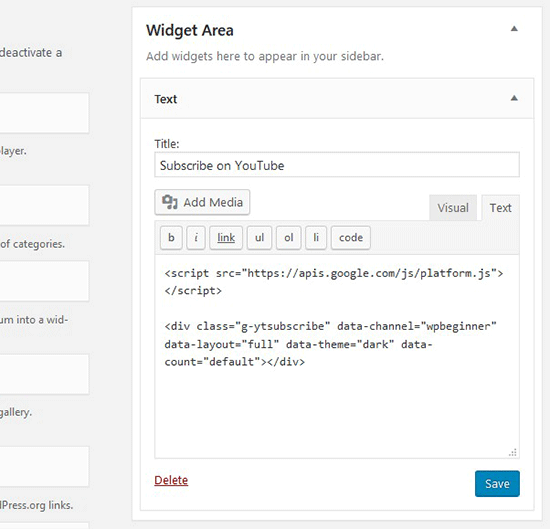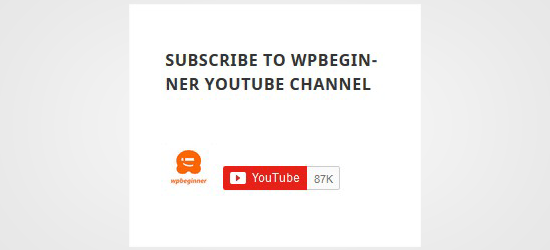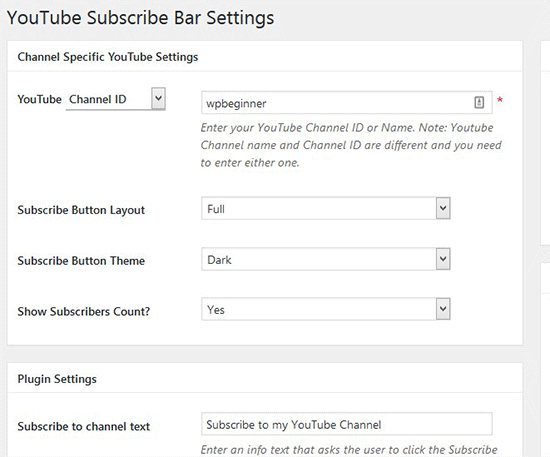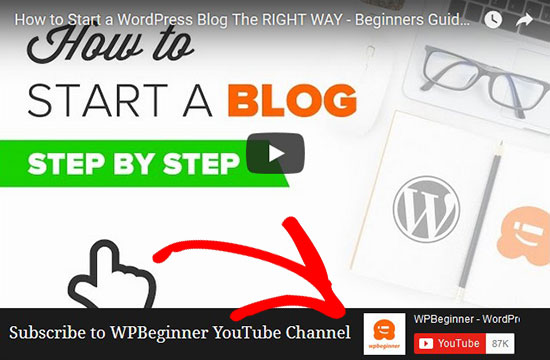Are you wondering whether you should start a blog or YouTube channel?
Blogging and vlogging are good ways to engage with your audience and grow your brand’s credibility. We are often asked by readers which they should start first blog vs YouTube?
In this article, we’ll explain our pick on blog vs YouTube and which you should start first with detailed explanation of our take.
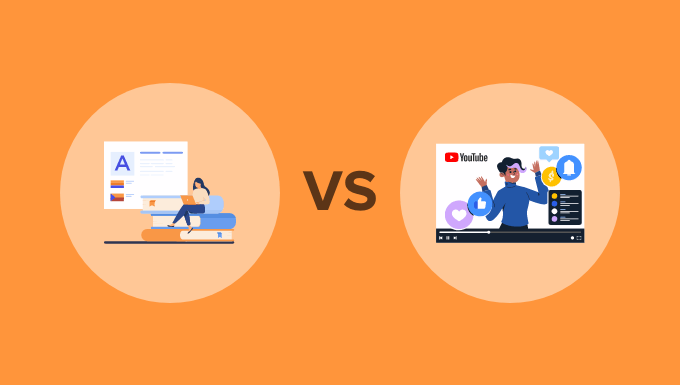
TLDR: we recommend you start with a blog and add a YouTube channel later if needed
This is a comprehensive guide, so we’ve included a table of contents for easier navigation:
What Is a Blog?
A blog is a type of website where articles, called ‘blog posts’, are presented in reverse chronological order with newer content appearing first. Blog posts are a great way to share your expert knowledge with your audience, build credibility, and attract visitors to your site.
If you want to start an online business, or communicate better with your existing customers or audience, then you should think about starting a blog.
Blogs typically present information in a conversational style and are run by individuals or a small group of people. However, there are now tons of corporate blogs that produce a great deal of useful informational and thought-leadership content.
Typical blog posts also have a comments section where users can respond to the article by making comments or asking questions.
Blogging has been around since 1993 and has become an essential marketing tool for many businesses. But is it still relevant in the age of YouTube and social media?
Why Starting a Blog Is so Important Today
There are currently 1.9 billion websites in the world, and over 600 million are blogs. That means that blogs make up a third of the web.
Blogging has become an important marketing strategy for businesses due to its benefits. You or your business can use a blog to promote ideas, brands, stories, products, and more.
Here are some of the more important benefits of blogging and why you should consider starting a blog.
1. A Blog Will Bring More Traffic to Your Website
A typical business website consists of a few important pages. For example, you may have a homepage, landing pages for your products and services, and a contact page.
Unfortunately, search engines may often decide that your website is less important than thousands of other websites in the same industry, especially if they have been around longer.
Adding a blog allows you to publish additional content which over time will help you bring more traffic to your website.
That’s a major reason to start with a blog rather than a YouTube channel because YouTube videos will attract traffic to the YouTube platform instead of your own website. You own and control your blog, while the YouTube platform is owned by Google and will benefit them.
2. A Blog Will Help Strengthen Brand Recognition and Build Authority
A blog helps you strengthen your brand identity. It gives you more opportunities to use your custom logo across your website, your social profiles, search results, and more.
This brand recognition when combined with customer trust and authority adds enormous value to your digital assets.
Adding a blog allows you to establish authority by regularly publishing content on topics related to your industry.
If you are consistently publishing new content, you’ll become the go-to place for your users and other businesses interested in those topics.
3. A Blog Will Help You Generate More Leads and Conversions
More than 70% of people visiting your website today, will never find it again. That’s because there is so much content and information on the internet.
Starting a blog will help you convert website traffic into potential leads, subscribers, and social media followers.
For example, you can use tools like OptinMonster to build an email list and grow a social media following. And with push notifications, you can send targeted messages to your blog visitors and bring them back to your website.
4. A Blog Will Help You Build an Engaging Audience
A static website doesn’t leave much room for a conversation. Why not add a blog to your site where users can engage by leaving a comment and sharing your posts on social media?
This helps you build a community around your business which is extremely useful.
It will help your visitors develop an affinity with your brand which pays off when they are looking to make a purchase or recommend your products and services to friends and family.
5. A Blog Will Let You Educate Customers and Share News
Blog posts allow you to educate customers about different ways they can use your products. This will allow you to compare your product with competitors, showcase product features, inform users about benefits, and more.
They’re also the best place to share your business news, announcements, and sales events.
For instance, if you are launching a Black Friday sale, you can promote it with a blog post. And then promote that blog post across your website with a floating header or footer banner.
6. A Blog Will Let You Build Additional Revenue Streams for Your Business
Blogs provide many opportunities to generate additional revenue and make money online. For instance, you can display ads in your blog posts using Google AdSense.
You can also promote affiliate products and make money with affiliate marketing or use your blog to sell premium content using MemberPress or Easy Digital Downloads.
7. A Blog Helps You Repurpose Content for Other Marketing Channels
Adding a blog to your website allows you to actively use blog content across your other marketing channels, such as making YouTube videos based on blog post content.
For example, we use our written WPBeginner tutorials as a helpful starting point for creating YouTube videos. This makes our video producers’ jobs easier and saves time. Then we embed the YouTube videos into the tutorial so our visitors can choose to read or watch the content.
Still not convinced? You can learn even more reasons to start a blog by taking a look at our article on the benefits of blogging.
Starting a Blog vs Starting a YouTube Channel
Now that you know about some of the benefits of blogging, you can see why we recommend that you start a blog first, and then add a YouTube channel in the future if you need.
Let’s summarize the most important points. When you build a blog, you are creating a platform that you own and control. The content you create will attract visitors to your website where they can learn more about your products and services.
On the other hand, the YouTube platform will always be owned by Google. The search traffic generated by your content will take people to the YouTube website, not your own.
Creating blog posts first also makes it easier to create other types of content, such as YouTube videos. Usually, the first step in creating a video is to write a script. Because you have already created written content on your blog, a lot of the work is already done.
Besides that, creating YouTube videos requires expensive equipment such as a camera and lighting, and you’ll also need to purchase video editing software and learn how to use it.
Finally, your blog is the perfect place for your visitors to watch your YouTube videos. You can easily embed YouTube videos in a blog post, giving your visitors the choice of watching or reading your content. That’s a great user experience.
What You Need to Start a Blog
We know that starting a blog can be a terrifying thought specially when you are not geeky. Guess what – you are not alone.
If you want to start a blog, then WordPress is the most popular blogging platform recommended by experts.
Although WordPress is free, there are some costs involved in creating a self-hosted blog. You will need to choose and register a domain name and decide on a web hosting provider.
You may also want to pay someone to design your website and purchase premium plugins to add features. The total cost will depend on your needs and goals.
The good news is that you can build a fully functional WordPress website for yourself and keep your costs under $100. Bluehost, an official WordPress-recommended hosting provider, has agreed to offer our users a free domain name and over 60% off on web hosting.
You can learn the details and options in our guide on how much it really costs to build a WordPress website.
Even better, when you signup with Bluehost using our link, they will automatically install WordPress for you, so you can start building your blog right away.
All you need to do is log in to your Bluehost account, and then click the ’Log in to WordPress’ button to get started.
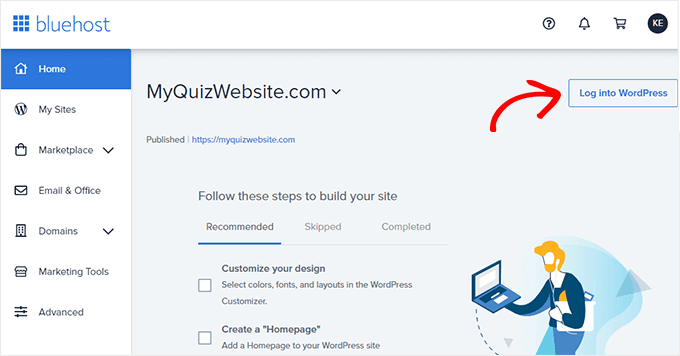
After that, you will need to set up your WordPress install, choose a theme and some plugins, then get started on your first blog post.
We take you through the entire process step by step in our beginner’s guide on how to start a WordPress blog. We’ll summarize the main steps below.
The end result will be an attractive and functional blog that you own.
Selecting a Theme to Customize Your Blog’s Appearance
Customizing the look and feel of your blog is by far one of the most exciting and rewarding parts of the journey of creating your WordPress blog.
WordPress comes with a powerful templating engine that allows you to change the appearance of your website by installing themes.
There are thousands of free and paid WordPress themes available. You can choose one that looks closer to what you have in mind for your website.
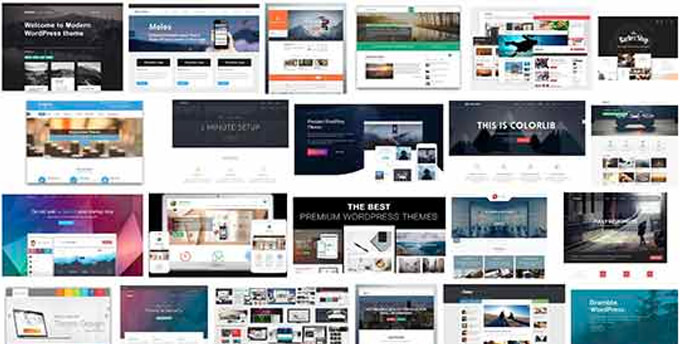
You can look for themes under the Appearance » Themes page. It will show you a bunch of default themes that come with your WordPress install.
For more themes, click on the ‘Add New’ button at the top to find more free themes.
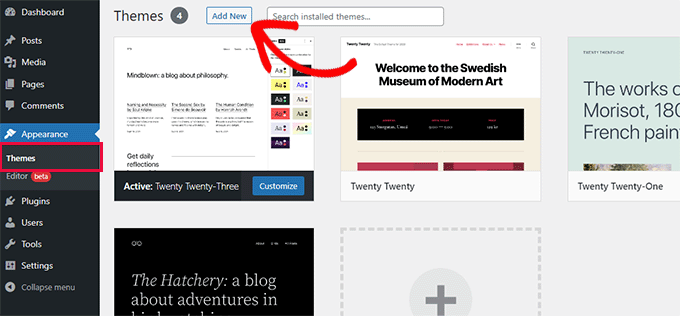
For premium or paid WordPress themes, you can try trusted WordPress theme shops like SeedProd, Thrive Themes, Astra, Elegant Themes, and more.
However, there is such an abundance of WordPress themes that it may become difficult for beginners to decide which theme they want to use.
We recommend choosing a minimalist design with plenty of white space. This provides you plenty of room to customize the theme and make it your own.
For more details, see our guide on how to choose the perfect theme for your website as well as our list of the best free WordPress blog themes.
Creating Your First Blog Post
Once you have selected your WordPress theme, you are now ready to create your first blog post. You just need to click on the Posts » Add New menu in your WordPress dashboard.
You will see an editor area where you can write your first blog post.

WordPress uses a block-based editor that allows you to create beautiful content layouts for your blog posts.
To familiarize yourself with the editor, see our WordPress block editor tutorial.
Once you’re done writing, go ahead and click on the Publish button on the top-right corner of the screen to make your blog post publicly available.

On the posts screen, you will notice several other sections such as Categories and Tags. You can use these to organize your blog posts into sections. We have a great write-up on the difference between categories vs tags, which we highly recommend that you read.
To utilize all the features on the posts screen, you should read our article on how to add a new post in WordPress (video included).
We also offer some helpful resources to help you brainstorm new post ideas to write about:
- 103 blog post ideas that your readers will love
- 73 types of blog topics that are proven to work
- How to write a good blog post (12 expert tips)
A lot of pro bloggers choose their specific topics strategically by doing keyword research. This helps their content rank higher in Google searches and get more traffic.
We have a step-by-step guide on how to do keyword research for beginners using the exact same method that we use on WPBeginner.
Extending and Growing Your Blog With Plugins
Once you publish your first blog post, you’ll probably want to get started with adding other usual elements on your website such as a contact page, galleries, sliders, and an email list. To add all these additional features, you need to use plugins.
Plugins are like apps for your WordPress website. They allow you to add new features and extend the functionality of WordPress without writing any code.
There are more than 60,000 free plugins available in the WordPress.org plugin directory alone. Plus, there are premium WordPress plugins sold by third-party developers with priority support and guaranteed updates.
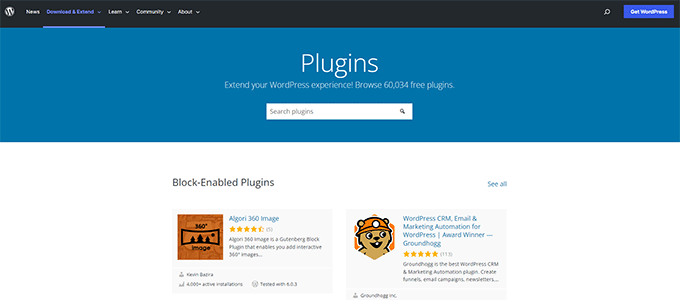
However, you also need to consider which plugins you need to use to keep your WordPress website secure, private, and anonymous.
Here are our top picks of the best plugins to grow your blog.
- All in One SEO is the best WordPress SEO plugin on the market and helps your anonymous website get more traffic from search engines.
- SeedProd is a powerful WordPress page builder that allows you to use a drag-and-drop interface to create any type of page for your website.
- MonsterInsights is the best WordPress Google Analytics plugin which helps you see where your visitors and coming from and what they see on your website.
- OptinMonster is a conversion optimization software, which helps you convert website visitors into email subscribers and customers.
- WPForms is the best WordPress contact form plugin and allows you to easily create forms for your website.
That’s just a start. You can learn how to add plenty of other features to your blog by checking out our list of useful tools to manage and grow your WordPress blog.
Monetizing Your WordPress Blog
WordPress is the largest publishing platform on the planet, and it powers over 43% of all websites. Many bloggers have successfully monetized their blogs, and you can too.
That’s why we put together a detailed list of proven ways you can make money online blogging with WordPress.
Unlike other articles on how to make money online, this is a comprehensive guide on how to make money at home legitimately, using blogging and WordPress.
Many of these methods require some investment of time and money to get started. As long as you’re willing to put in the effort, you’ll reap the reward.
Here are some of the main strategies we cover:
- Displaying Google Adsense ads
- Selling ads
- Affiliate marketing
- Offering members-only content
- Selling digital products
- Selling physical products in an online store
We hope this tutorial helped you learn why you should start with a blog instead of a YouTube channel. You may also want to learn how to create an email newsletter the right way, or check out our list of the best YouTube video gallery plugins for WordPress.
If you liked this article, then please subscribe to our YouTube Channel for WordPress video tutorials. You can also find us on Twitter and Facebook.
The post Should You Start a Blog or a YouTube Channel? (Beginner’s Guide) first appeared on WPBeginner.
